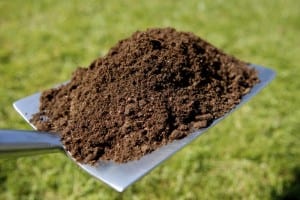By Dawn Pettinelli – Extension Instructor Plant Science & Landscape Architecture
Saves Money & The Environment!
 A soil test is an inexpensive and valuable tool to help determine what will grow best in your soil, and what it might need to boost its fertility. It’s a smart decision to test the soil every three to five years and it’s particularly important in new garden areas or in established plantings that are not performing as well as expected. Soil testing eliminates the guesswork many gardeners face when deciding the kinds and amounts of fertilizers or soil amendments they should be using.
A soil test is an inexpensive and valuable tool to help determine what will grow best in your soil, and what it might need to boost its fertility. It’s a smart decision to test the soil every three to five years and it’s particularly important in new garden areas or in established plantings that are not performing as well as expected. Soil testing eliminates the guesswork many gardeners face when deciding the kinds and amounts of fertilizers or soil amendments they should be using.
Get Professional Soil Recommendations
Growing a garden or a lawn? A soil test is both environmentally and financially sensible, and costs around $10 from the UConn soil lab.
- Why test your soil?
Knowing how much fertilizer, limestone or any ammendment to apply saves time and money. Also it minimizes the potential for ground and surface water pollution from the overapplication of nutrents like nitrogen and phosphorous. Regardless of whether you garden organically or use synthetic fertilizers, you will find that plants grow best when their nutritional requirements are met. This is achieved not only by the addition of nutrients such as nitrogen, phosphorus and potassium but also by sometimes modifying the soil’s pH by adding limestone or sulfur. - What can a soil test determine?
Test results indicate the soil’s pH level, the amounts of available plant nutrients such as phosphorus, potassium, calcium, magnesium, micronutrients and any nutrient imbalances, excesses or deficiencies. Soil pH is a measurement of the acidity of the soil. A pH of 7.0 is neutral, below 7.0 is acidic, and above 7.0 is alkaline. Tests also will report the amount of estmated total lead in the soil…a contaminant that must be dealth with. Site specific fertilizer recommendations are provided based on the soil test results. Separate analyses offered by the lab include: percent organic matter, soil texture determination, and soluble salts. - What can a soil test not determine?
The soil fertility test performed at the University of Connecticut cannot detect the presence of contaminants such as pesticides or petroleum products, problems due to insects, diseases, poor or excessive drainage, environmental stresses such as drought or winter injury, or improper cultural techniques.
A listing of state approved environmental laboratories that can perform these analyses is available at the Connecticut Department of Public Health’s website.
- When is the best time of year to have your soil tested?
Fall is the best time for sampling because what you add to the soil then can begin to react with the soil over the winter. When submitting samples in the spring, try to send them in early enough to give yourself time to prepare your beds before planting. Generally, the turnover time is 3 to 5 days in the lab but may be up to two weeks in April and May. If you want to compare your results to previous soil test results, take your samples at the same time of year. - How do you get your soil tested?
Directions for sample collection, fees and mailing directions are listed in our free soil testing information brochure that is available at your local Cooperative Extension Center, at the UConn Home and Garden Education Center, toll-free (877) 486-6271, at some Connecticut garden centers, or by calling the UConn Soil Nutrient Analysis Laboratory at (860) 486-4274. You can also visit UConn’s soil test web site.
Those preferring the convenience of our prepaid soil test collection kit can contact the lab or stop by a local Extension Center.
Soils in the prepaid kits receive the standard nutrient analysis and currently cost just $8.00. Postage is not included in the cost of the kit but usually costs around than $2 per sample. The lab can usually get you your results in about ten days!